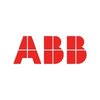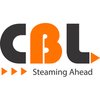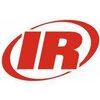Filter interviews by
Cheema Boilers Mechanical Engineer Interview Questions and Answers
Cheema Boilers Mechanical Engineer Interview Experiences
1 interview found
I applied via Walk-in and was interviewed in Nov 2022. There were 2 interview rounds.

(2 Questions)
- Q1. Basic study and training experience of industry
- Q2. Waheguru ji🙏🏻🙏🏻🙏🏻🙏🏻🙏🏻🙏🏻🙏🏻
Interview Preparation Tips
Interview questions from similar companies

Senior Engineer Interview Questions & Answers
Isgec Heavy Engineeringposted on 20 Nov 2021
I applied via Naukri.com and was interviewed in May 2021. There was 1 interview round.
Interview Questionnaire
1 Question
- Q1. They just asked basics que. related to job profile.. seeking confidence..
Interview Preparation Tips

I applied via Campus Placement and was interviewed before Mar 2021. There was 1 interview round.
(1 Question)
- Q1. Tell me something about yourself
- Ans.
I am a highly experienced Senior Engineer with a strong background in software development and project management.
Over 10 years of experience in software development
Proficient in multiple programming languages such as Java, C++, and Python
Led successful projects from conception to completion, ensuring on-time delivery and high-quality results
Strong problem-solving and analytical skills
Excellent communication and leader...
Interview Preparation Tips

I applied via Referral and was interviewed before Sep 2023. There was 1 interview round.
(2 Questions)
- Q1. What is a resistor?
- Ans.
A resistor is an electronic component that resists the flow of electrical current.
Resistors are used to control the amount of current flowing in a circuit.
They are measured in ohms (Ω) and have color-coded bands to indicate their resistance value.
Resistors dissipate energy in the form of heat when current flows through them.
Common types of resistors include carbon film, metal film, and wirewound resistors.
- Q2. What is a transistor?
- Ans.
A transistor is a semiconductor device used to amplify or switch electronic signals.
Transistors are fundamental building blocks of modern electronic devices.
They can amplify electrical signals, control the flow of current, and act as switches.
Common types of transistors include bipolar junction transistors (BJTs) and field-effect transistors (FETs).


(3 Questions)
- Q1. Refrigeration cycle ?
- Ans.
Refrigeration cycle is a thermodynamic cycle used in refrigerators and air conditioning systems to transfer heat from a low temperature reservoir to a high temperature reservoir.
Consists of four main components: compressor, condenser, expansion valve, and evaporator
Refrigerant is compressed in the compressor, then condensed in the condenser, expanded in the expansion valve, and evaporated in the evaporator
Heat is absor...
- Q2. Theory on refrigeration
- Ans.
Refrigeration theory involves the transfer of heat from a low temperature region to a high temperature region using a refrigerant.
Refrigeration is based on the principles of thermodynamics, specifically the second law which states that heat naturally flows from a higher temperature to a lower temperature.
The refrigeration cycle consists of four main components: compressor, condenser, expansion valve, and evaporator.
The...
- Q3. Compressor clearances
(1 Question)
- Q1. Why u want to join Kirloskar

I applied via Company Website and was interviewed in Feb 2022. There were 4 interview rounds.

(1 Question)
- Q1. Based upon experience the question is different from each other.
(1 Question)
- Q1. Background and experience related questions
(1 Question)
- Q1. Technical Background and field related questions
Interview Preparation Tips

I applied via Naukri.com and was interviewed before Oct 2021. There were 3 interview rounds.

(2 Questions)
- Q1. Tell me something about your self??
- Q2. What is your daily work management???
(1 Question)
- Q1. Why are you want to change company??
Interview Preparation Tips

Senior Engineer Interview Questions & Answers
Isgec Heavy Engineeringposted on 11 Oct 2020
I applied via Recruitment Consulltant and was interviewed in Oct 2020. There were 5 interview rounds.
Interview Questionnaire
4 Questions
- Q1. Basic of fabrication, materials welding processes, distortion control methods, lifting techniques
- Q2. Telephonic conversation regarding basics of welding and material properties
- Q3. Interview with a panel of 4 judges
- Q4. Salary negotiation notice period etc
Interview Preparation Tips

Senior Engineer Interview Questions & Answers
Isgec Heavy Engineeringposted on 19 Feb 2024
I applied via Referral and was interviewed in Aug 2023. There were 2 interview rounds.
(1 Question)
- Q1. Salary expectations, notice period.
(1 Question)
- Q1. Calibration, process , Dcs, logic

Senior Engineer Interview Questions & Answers
Isgec Heavy Engineeringposted on 28 Mar 2024
I applied via Company Website and was interviewed before Mar 2023. There was 1 interview round.
(3 Questions)
- Q1. What is the process of erection of duct
- Ans.
The process of erection of duct involves planning, fabrication, transportation, installation, and testing.
Planning involves determining the layout, size, and material of the ducts.
Fabrication includes cutting, bending, and assembling the ducts according to the design.
Transportation is the movement of fabricated ducts to the installation site.
Installation involves positioning and connecting the ducts to the HVAC system.
...
- Q2. What is the code followed for the fabrication of steel structure materials
- Ans.
The code followed for the fabrication of steel structure materials is typically based on industry standards and regulations.
The fabrication of steel structures is typically governed by codes such as the American Institute of Steel Construction (AISC) Code of Standard Practice.
Other codes that may be followed include the American Welding Society (AWS) D1.1 Structural Welding Code - Steel.
Fabrication processes must also ...
- Q3. Erection sequence of steel structure
- Ans.
The erection sequence of a steel structure involves planning and executing the assembly of components in a specific order to ensure safety and stability.
Start by assembling the foundation and anchor bolts.
Next, erect the columns and connect them to the foundation.
Then, install the beams and trusses to form the framework.
After that, add the bracing and diagonal members for stability.
Finally, complete the structure by ad...
Cheema Boilers Interview FAQs
Tell us how to improve this page.
Cheema Boilers Interviews By Designations
- Cheema Boilers Production Engineer Interview Questions
- Cheema Boilers Assistant Design Engineer Interview Questions
- Cheema Boilers Assistant Electrical Engineer Interview Questions
- Cheema Boilers Mechanical Engineer Interview Questions
- Cheema Boilers Boiler Engineer Interview Questions
- Cheema Boilers Assistant Engineer Mechanical Interview Questions
- Cheema Boilers Autocad Draughtsman Interview Questions
- Cheema Boilers Service Engineer Interview Questions
- Show more
Interview Questions for Popular Designations
- Mechanical Maintenance Engineer Interview Questions
- Diploma Mechanical Engineer Interview Questions
- Mechanical Technician Interview Questions
- Senior Engineer Mechanical Interview Questions
- Mechanical Supervisor Interview Questions
- Junior Mechanical Engineer Interview Questions
- Mechanical Fitter Interview Questions
- Mechanical Maintenance Fitter Interview Questions
- Show more
Cheema Boilers Mechanical Engineer Interview Process
based on 1 interview
Interview experience
Interview Questions from Similar Companies
Cheema Boilers Mechanical Engineer Reviews and Ratings
based on 5 reviews
Rating in categories
|
Engineer
53
salaries
| ₹2.2 L/yr - ₹7 L/yr |
|
Project Engineer
24
salaries
| ₹3.5 L/yr - ₹6.5 L/yr |
|
Production Engineer
21
salaries
| ₹2.2 L/yr - ₹4.5 L/yr |
|
Mechanical Engineer
21
salaries
| ₹2 L/yr - ₹5.5 L/yr |
|
Design Assistant
19
salaries
| ₹2.2 L/yr - ₹4.6 L/yr |

Thermax Limited

ABB

Isgec Heavy Engineering

Kirloskar Pneumatic
- Home >
- Interviews >
- Cheema Boilers Interview Questions >
- Cheema Boilers Mechanical Engineer Interview Questions










